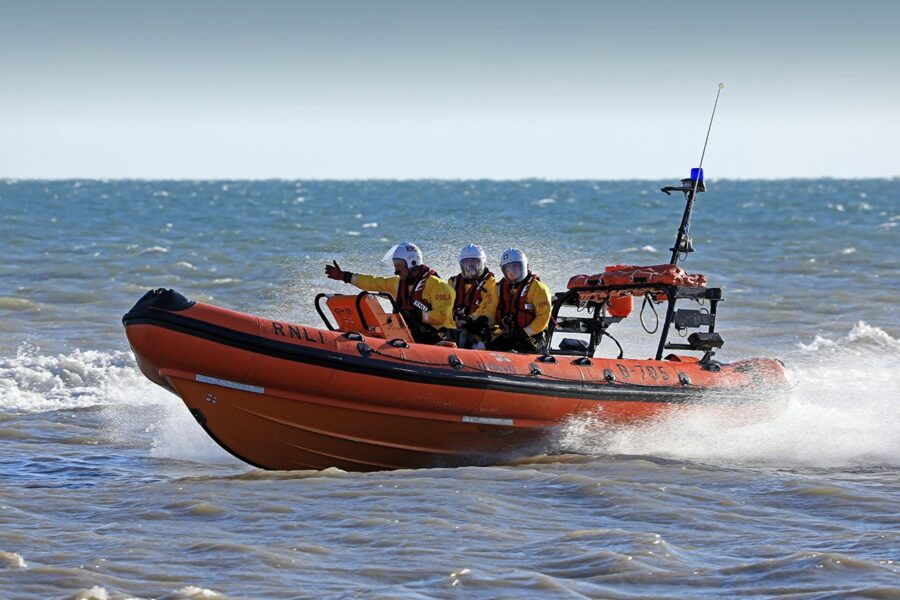On 21 November, the last of the RNLI’s Atlantic 75 inshore lifeboats was withdrawn from service, being replaced by a new Atlantic 85, reports Nicholas Leach.
The historic event took place at Littlestone-on-Sea near New Romney in Kent, when the Atlantic 75 Fred Clarke B-785 (pictured above) was replaced by the Jean McIvor B-922.
To mark the event, both lifeboats were launched for a final training exercise, undertaken on a bright autumn day. A small crowd gathered on the beach outside the lifeboat station to watch as the last Atlantic 75 in RNLI service was launched for the final time.
After being put through her paces alongside her successor, Fred Clarke was recovered onto her carriage and then, after a final wash down, was left outside the boathouse ready for a road transport vehicle to take her to Poole, where the RNLI’s technicians were due to modify her for further service as a boarding boat.
The changeover at Littlestone from the Atlantic 75 to the 85 had taken almost a year.
Although the new 85 was delivered to the station in December 2020, due to Covid restrictions, crew training could not be completed as quickly as normal, so the new lifeboat could not be declared operational.
In addition, major alterations had to be made to the boathouse, which was extended and refurbished internally to provide improved crew facilities as well as sufficient space for the new lifeboat on her new carriage.
During the past few months, the last of the Atlantic 75s in RNLI service have gradually been replaced around the coast, with the stations at Blyth, Gorleston and Weston-Super-Mare all being supplied with Atlantic 85s during this time.
In total, 97 Atlantic 75 lifeboats were built between 1993 and 2003. Fred Clarke was placed on station at Littlestone in June 2002.
Her replacement Jean McIvor will be formally named at a ceremony some time next year. The RNLI has built a total of 130 Atlantic 85 lifeboats, making them the most numerous of any type in the charity’s history.
The Atlantic 85 is the RNLI’s third-generation B-class rigid inflatable, and can trace its origins back to the Atlantic 21 of the early 1970s, which was refined and enlarged to become the Atlantic 75. The hull is constructed from a fibre-reinforced composite, and power comes from twin 115hp Yamaha four-stroke outboards giving a top speed of 35 knots.
This story was taken from the latest issue of Fishing News. For more up-to-date and in-depth reports on the UK and Irish commercial fishing sector, subscribe to Fishing News here or buy the latest single issue for just £3.30 here.








